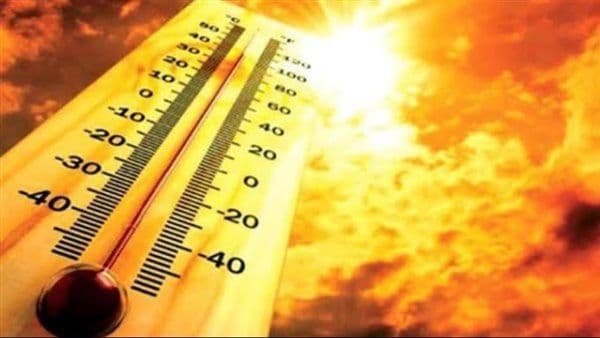The Hidden Heat: Unmasking Egypt's Humid Summer and Adapting to the 'Felt' Reality
Uncover the true 'felt' heat of Egypt's summer. Learn about the meteorological forces driving it and get essential strategies for staying cool and adapting to the climate.
Beyond the Thermometer: Understanding Egypt's Unique 'Felt' Temperatures
When we talk about summer in , the numbers on the thermometer often tell only part of the story. While official forecasts might predict a scorching 40 degrees Celsius in and the , the actual experience on the ground, what meteorologists call the 'felt' temperature, can be a stifling 42 or even 43 degrees. This significant jump isn't just a trick of the mind; it's a direct consequence of the suffocating humidity that blankets much of the country. During daylight hours, conditions are typically described as intensely hot and humid across most regions, easing slightly to merely hot and humid along the northern coasts. Even as night falls and into the early morning, the air remains warm and persistently humid, offering little respite. This pervasive moisture makes it harder for the body to cool itself through sweat evaporation, amplifying the discomfort and making an already hot day feel truly oppressive. Beyond the heat, the morning hours, specifically from 4 AM to 8 AM, often bring dense water mist or fog, particularly affecting major routes connecting northern areas, Greater Cairo, and the northwestern coast. This 'felt' reality, a blend of searing heat, clinging humidity, and atmospheric phenomena, defines the Egyptian summer experience far more than a simple temperature reading ever could.
The Engines of Summer: Dissecting Egypt's Meteorological Influences
So, what's driving this relentless, humid heat that so profoundly impacts Egypt's summers? The points to a complex atmospheric dance, primarily influenced by the extension of the at ground level. This powerful low-pressure system, originating from the Indian subcontinent, funnels warm, moisture-laden air into the region. Concurrently, an upper-level high-pressure system acts as a lid, trapping this heat and humidity close to the surface, effectively intensifying the 'felt' temperatures. It's a potent combination that pushes daily highs a significant 4 to 6 degrees Celsius above seasonal averages, even before the notoriously sweltering month of August fully sets in. This suggests an unusually early peak to the summer's intensity. Humidity levels become alarmingly high, often reaching 80-85% in Cairo and the Delta, and soaring to over 95% in coastal governorates. These meteorological drivers aren't just about heat; they also contribute to other summer phenomena, like the formation of dense morning fog that reduces visibility and the occasional activation of winds, sometimes stirring up sand and dust, particularly in southern regions. Understanding these underlying forces helps us grasp why Egypt's summer climate presents such a unique and formidable challenge.

Regional Realities: How Heat and Humidity Reshape Life Across Egypt
The pervasive heat and humidity don't affect Egypt uniformly; their impact varies significantly across the country, reshaping daily life in distinct ways. While most areas, including the bustling heart of and the fertile , grapple with intensely hot and humid daytime conditions, the northern coastal regions experience a slightly moderated, though still challenging, hot and humid climate. Nighttime offers little escape, as the air throughout the country remains warm and humid, clinging to skin and making restful sleep difficult. This relentless warmth and moisture dictate everything from work schedules to social gatherings, pushing activities indoors or into the cooler, though still humid, evening hours. Beyond the thermal discomfort, dense morning fog is a recurring reality for commuters, particularly on major arteries leading to and from northern Egypt, Greater Cairo, and the northwestern coast. From 4 AM to 8 AM, visibility can drop dramatically, demanding extra caution and slowing down the start of the day. Meanwhile, southern regions, particularly and , including cities like Halaib and Shalateen, frequently contend with active winds that can whip up sand and dust. These sandstorms not only reduce air quality but also disrupt transportation and outdoor activities, adding another layer of complexity to the summer's challenges. The cumulative effect of these localized weather patterns fundamentally alters the rhythm and routines of life across Egypt's diverse landscapes.
Navigating the Swelter: Essential Strategies for Staying Safe and Cool
Coping with Egypt's intense summer, especially given the amplified 'felt' temperatures, demands proactive strategies to stay safe and maintain well-being. The meteorological authority's warnings are clear: this is a significant heatwave, exacerbated by high humidity. For individuals, staying adequately hydrated is paramount. Drinking plenty of water throughout the day, even when not feeling thirsty, helps the body regulate its temperature despite the humidity hindering sweat evaporation. Limiting exposure to direct sunlight during peak daytime hours, typically from noon to late afternoon, is also crucial. If outdoor activities are unavoidable, seeking shade and wearing light-colored, loose-fitting clothing made from breathable fabrics can make a noticeable difference. For those commuting in the early mornings, especially between 4 AM and 8 AM, heightened awareness of dense fog on roads in northern areas, Greater Cairo, and the northwestern coast is essential. Reduced visibility necessitates slower speeds and increased caution. In southern regions prone to dust and sand activity, monitoring wind forecasts and taking precautions like wearing masks or staying indoors during active periods can protect respiratory health. The key is to acknowledge the severity of the 'felt' heat and humidity, adapt daily routines accordingly, and heed official advisories to minimize health risks and navigate the swelter as comfortably as possible.
Looking Ahead: Building Resilience in Egypt's Evolving Climate
The recurring pattern of intense heatwaves, elevated 'felt' temperatures, and an early summer peak, as highlighted by meteorological experts, prompts a critical look at long-term climate resilience. This isn't just about surviving one particularly hot summer; it's about adapting to an evolving climate where such conditions may become the new normal, or even intensify. The current scenario, with temperatures significantly above average even before August, underscores a broader trend that demands strategic foresight. For communities, this means exploring sustainable urban planning that prioritizes green spaces, passive cooling designs in architecture, and efficient water management systems. Public health infrastructure needs bolstering to effectively respond to heat-related illnesses, ensuring vulnerable populations are protected. On a national scale, investing in advanced meteorological forecasting offers invaluable early warning capabilities, allowing for better preparedness and resource allocation. Furthermore, exploring innovative agricultural practices that can withstand higher temperatures and water stress will be vital for food security. The challenges are undeniable, but by understanding the underlying meteorological forces and acknowledging the 'felt' reality of a changing climate, Egypt can proactively build resilience, fostering a future where its people and economy are better equipped to thrive amidst the summer's hidden heat.
Related Articles

The Unseen Fire: Why Egypt's Summer 2025 Feels More Intense Than the Numbers Say

The Unseen Fire: Why Egypt's Summer 2025 Feels More Intense Than the Numbers Say

The Invisible Inferno: Why Egypt's Heatwave Feels Hotter Than It Looks

The Invisible Inferno: Why Egypt's Heatwave Feels Hotter Than It Looks

Decoding Tomorrow's Discomfort: Egypt's Humid Heat Explained

Decoding Tomorrow's Discomfort: Egypt's Humid Heat Explained

Decoding Tomorrow's Swelter: Proactive Steps for an Intense Summer
